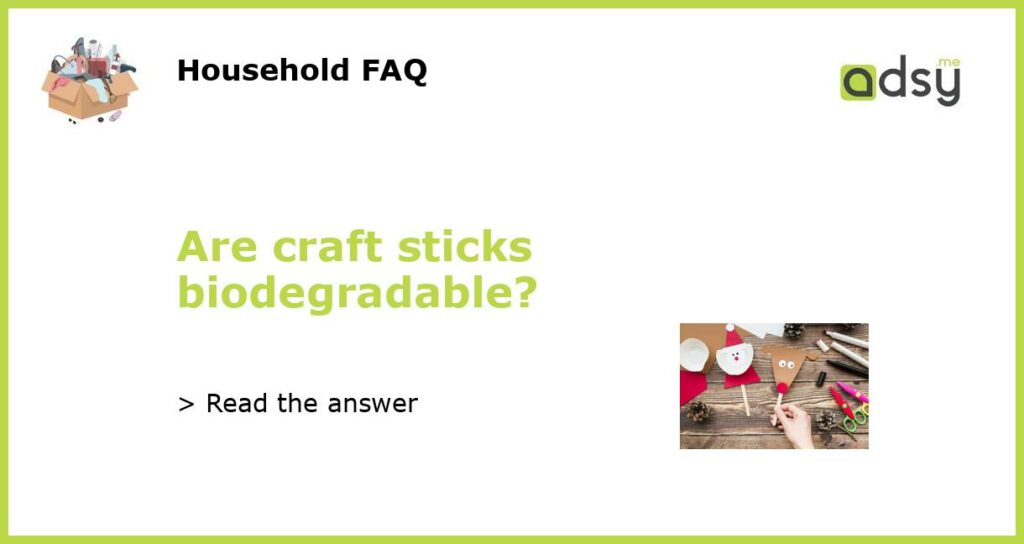What are craft sticks?
Craft sticks are a popular crafting material used for various DIY projects such as making miniature houses, photo frames, and other fun crafts. They are also commonly used in schools for art and craft projects. Craft sticks are thin rectangular pieces of wood that are durable and lightweight, making them easy to work with.
Are craft sticks environmentally friendly?
Craft sticks are made from wood, which is a natural and renewable resource. These sticks are biodegradable and compostable, which means they can decompose over time, releasing nutrients back into the soil. Using craft sticks in place of plastic or other non-biodegradable materials is a sustainable choice.
How long does it take for craft sticks to biodegrade?
Craft sticks can take several months to a year to fully biodegrade, depending on the conditions in which they are placed. For instance, they will break down more quickly in a compost bin or exposed to moisture rather than in a landfill. However, it’s crucial to keep in mind that biodegradable materials still have an environmental impact, and proper disposal is still necessary to minimize waste.
What are some alternative sustainable materials to craft sticks?
There are many alternative sustainable materials that can be used in place of craft sticks. One option is to use sticks, twigs, or branches found in nature, which are also biodegradable. For instance, using small twigs or branches for crafting can add a beautiful natural touch to the project. Another option is to use biodegradable polymer-based materials like PLA, which is made from plants and is compostable.
Craft sticks are an eco-friendly choice for crafting due to their sustainable nature and biodegradability. They can take time to break down, but with proper disposal, they can minimize waste and have a positive impact on the environment. It’s important to consider alternative sustainable materials to craft sticks, which can add a unique touch to the project while still being environmentally friendly.






